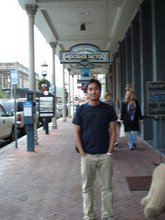Breakdown Points to Lower Prices
by Carl Swenlin
September 5, 2008
On August 15 I wrote an article pointing out that an ascending wedge had formed on the S&P 500 chart. I noted that this is a bearish formation, and that the most likely resolution would be a breakdown from the wedge followed by a price correction. The breakdown did in fact occur two days after I made my comments, but the correction did not immediately follow. Instead prices moved sideways for about two weeks before finally breaking down again on Thursday, belatedly fulfilling the expectation of a correction. Now we must ask if this is the beginning of a deeper correction or if it will merely end as a successful retest of the July lows.
The first evidence to consider is that we are still firmly in a bear market, and the down trend is clearly visible on the chart below. Another worrisome sign is that the PMO (Price Momentum Oscillator) has topped below the zero line, which should always be viewed with apprehension, particularly when it occurs at the end of a rally.

The next chart shows our On-Balance Volume (OBV) Indicator Set. The Climactic Volume Indicator (CVI) measures extreme OBV movement within the context of a short-term OBV envelope for each stock in the index. The Short-Term Volume Oscillator (STVO) is a 5-day moving average of the CVI. The Volume Trend Oscillator (VTO) summarizes rising and falling OBV trends. These charts tell us if the index is overbought or oversold based upon volume in three different time frames. All three are giving us useful information at present.
The CVI recently hit a climactic top just before the price break forced a climactic CVI low. Since this CVI low occurred in conjunction with a price trend change, I assume that it is an initiation climax that will lead prices lower. The STVO supports this conclusion because it is topping in overbought territory. The VTO, is not particularly overbought, but you can see that it is topping at the same level as it did at previous price tops.

It is also worth mentioning that September is historically one of the worst months of the year, and the market is entering this dangerous period in a very weak condition. A crash is not out of the question, although, that is not a prediction, just a caution to not get too anxious to pick a bottom.
Bottom Line: While positive outcomes can and do happen during bear markets, the odds are strongly against them. Another decline has emerged out of a short, weak rally, and I think that a continued decline is more likely than a simple retest of the July lows.
We rely on our mechanical trend models to determine our market posture. Below is a recent snapshot of our primary trend-following timing model status for the major indexes and sectors we track. Note that we have included the nine Rydex Equal Weight ETF versions of the S&P Spider Sectors. This may seem redundant, but the equal weighted indexes most often do not perform the same as their cap-weighted counterparts, and they provide a way to diversify exposure.




